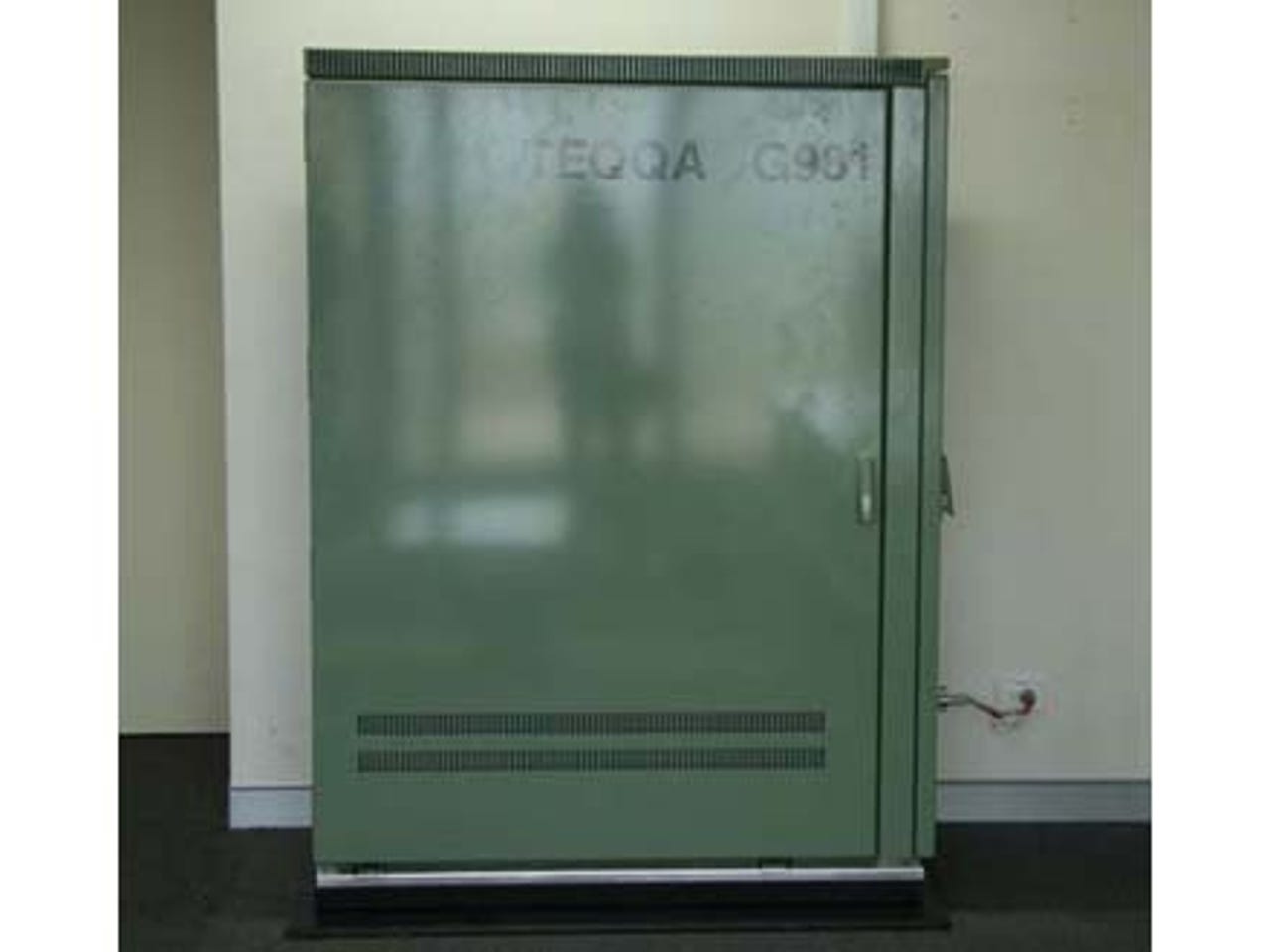Photos: Inside Telstra's nodes


Depending on the cooperation of 500 local councils, 50,000 of these Alcatel-Lucent manufactured nodes, or smaller versions of them, will be making their way to streets or yards. Telstra's COO Greg Winn admitted he expects this process to cause some problems — the company has faced similar issues in the past.
"There are still towers that haven't been built that were in the original plan. Why? Council approvals," he said. Telstra had to put the towers elsewhere.
"I'd like you to raise hands those of you who'd like [a node] in your yard... I'm waiting. Now how many of you would like to have it in somebody else's yard?" he joked.
He wanted the national broadband network to be free of such problems. "Somebody better have a 'super vote' to say when you start building you can build, or this thing's going to be a nightmare," he said.
The node which journalists were shown can handle a maximum of 384 customer lines. Telstra's idea was to have no house more than 800m away from a node within its five cities footprint, and no more than 1,500m away from the node everywhere else.
Those less than 800m from the node will be able to access speeds of 25-50Mbps, while bandwidth for those 1,500m from the node will top out at 20Mbps.
Each node takes two weeks to complete because first Telstra has to lay a concrete plinth which has conduits in it for the fibre and copper to pass through. The concrete has to cure before the node can be hooked into external power, fibre and copper.
Once completed, the cabinets won't be opened often because services could be provisioned remotely. In fact, every time the node is opened, an alert will be sent to a team responsible for monitoring the nodes 24/7.
The cabinets have been designed with harsh Australian conditions in mind. According to Telstra they have been shock tested, impact tested, temperature tested and ballistic tested — able to handle three shotgun blasts from a specified distance.
For those who are interested in correct nomenclature and exact positions, the picture above shows what is inside the cabinets.
The new next to the old. A cable of copper lines alongside a fibre bundle. Fibre will now run all the way to the new nodes.
People will have to be cut over to the network without disrupting their current services. That means cutting lines from pillars in the streets (pictured) to the nodes. Telstra called this "teeing in".
A line from the new cabinet is connected to the line between the home and the pillar using a plastic contraption such as this one. Once services are working over the new link, the line to the pillar can be cut.
The cut-over will take place in pits across the country, which remain hidden under concrete manholes across the city. The pits that journalists saw were "pristine", Winn was quick to say. Pits in the real world could have mud and even snakes lining their depths.